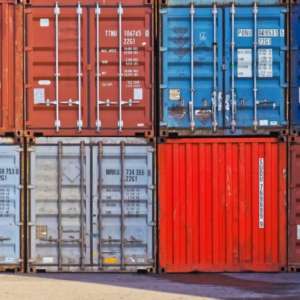Every time Amazon sets its sights on a new industry to disrupt, the response from that industry’s old guard is the same: it can’t happen to us. Everyone thinks theirs is the business that is too complex for Jeff Bezos and company to disrupt, and yet with every passing year, Amazon expands its reach. From groceries, with its acquisition of Whole Foods, to pharmaceuticals, with Pillpack, to entertainment (eight Emmys and counting), there seems to be no limit to what this one-time online bookstore can do. And that’s to say nothing of Amazon Web Services (AWS), which hosts an astonishing 42 percent of the cloud market by revenue. Now Amazon is making a concerted push into logistics, and the question everyone is (or should be) asking is: what does Amazon want?
Logistics professionals arguably know better than anyone how dramatically Amazon can turn an industry upside-down. Amazon has created a whole host of consumer expectations that simply did not exist before, from lightning-fast shipping to constant visibility, to free returns. These expectations are no longer confined to online shopping, and even B2B interactions are increasingly expected to move at Amazon’s pace. Without a doubt, Amazon’s innovations have shaken the industry out of complacency, and given customer’s more power. For years, Amazon accomplished this with a simple strategy: lose money. The company’s willingness to pour tens of millions of dollars into a new venture, then scrape by for years on razor-thin margins, while undercutting the competition is legendary. Equally as legendary is Amazon’s ravenous hunger for data, and its commitment to using it to locate radical new efficiencies. Given that many 3PL providers and carriers already exist on tight margins, and are sometimes reluctant to invest in new technology, this should be cause for concern for both large and small providers.
So what exactly is Amazon planning for the world of logistics? In some ways it’s hard to say, because the company is famously coy about its long-term plans. We can, however, look for clues among its public statements and its history of development in other sectors. In 2016, Amazon called itself a “transportation service provider” for the first time, and in 2018 it added “transportation and logistics services” to its list of competitors in its annual public filing. In June of 2018 Amazon launched a new delivery program, creating local franchises for courier deliveries (though these independent operators are driving Amazon-owned Mercedes vans and providing the parent company with invaluable data). Amazon’s plans to handle its own last-mile deliveries will plainly cut into the profits of FedEx, UPS, and the USPS. But it has disrupted the freight landscape even further with its Fulfillment By Amazon (FBA) program, in which third-party sellers send bulk inventory to Amazon’s fulfillment centers, where they store it and sell it, even if the product isn’t sold on Amazon. Look for aggressive attempts to expand these services in the near future.
On the oceans, the company is also clearly eyeing bigger game for its long-term logistics goals. In 2016, Amazon launched its non-vessel-operating common carrier (NVO) program, and with freight volume around 123,000 TEU last year, according to JOC, history tells us that Amazon doesn’t think small. There is speculation that Amazon plans to ship all its oceangoing FBA merchandise via its NVO, by offering those customers preferential warehouse placement or other incentives. Some observers speculate that Amazon may even buy its own carrier fleet, as it has with jets and delivery vans, despite the fact that ocean carriers are not known for being hugely profitable. And there are even rumors that Amazon’s NVO could use its customers’ shipping data to reverse-engineer their products. The fevered speculation around what Amazon plans to do next is making some shippers reluctant to do business with it, and it’s even giving its customers pause.
In spite of the addictive appeal of Amazon’s services, there are signs that Americans are becoming uncomfortable with its power. The company’s search for a second headquarters already had cities grousing over the tax incentives they demanded, and that was before New York City turned them away. The news that Amazon paid $0 in corporate income tax in 2018, while legal, nevertheless ruffled feathers. Stories of mistreated warehouse workers keep surfacing. And as Amazon inches closer to true vertical integration–manufacturing its own products, selling them on its website, and delivering them with its own trucks–it risks being seen as a predatory or even monopolistic business.
If Amazon wants to dispel this cloud of suspicion, it should be more transparent about its goals. Most Americans don’t have a problem with Amazon being the greatest company in the world, but they don’t want it to be the only company in the world. And for logistics professionals, freight forwarders, and nervous shippers, the best way to prepare for Amazon’s logistics foray is to follow its lead: invest in technology, center your operations around your customer, and don’t be afraid to try bold new initiatives that challenge the status quo. The one thing we cannot do is operate at a loss. There is widespread concern that Amazon will drive the carrier market into a tailspin eliminating competition and capacity. Once the market is disrupted it will come back and replace capacity and equipment with their own. One does not have to look further than the new Amazon Bookstore to see how this will play out. If we can assist with your domestic or international shipments, please don’t hesitate to call or email us.
Red Arrow Logistics has the scale and scope to meet the budget and schedule requirements of the largest and smallest companies alike. If we can be of assistance, please email me at liz.lasater@redarrowlogistics.com or give us a call 425-747-7914


